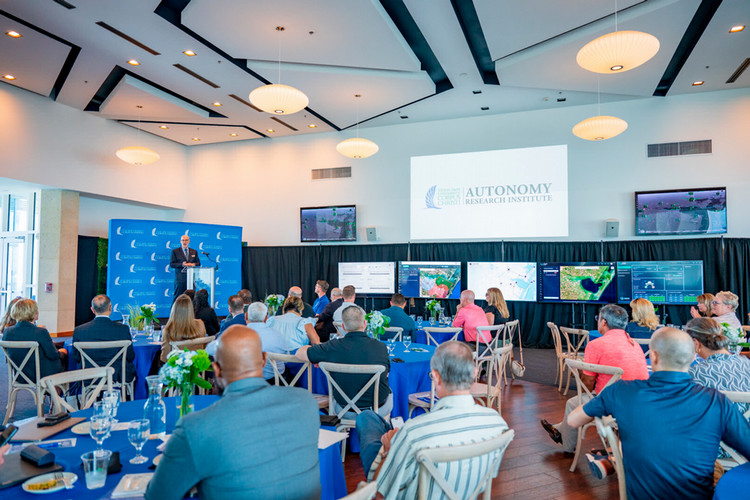Islanders Reach New Heights: TAMU-CC Students Lead Solar Eclipse Research to Uncover Atmospheric Data
CORPUS CHRISTI, Texas — In recent years, South Texas has become a hotspot for remarkable celestial and weather events, from solar eclipses to hurricanes. As public interest in these phenomena grows, they are closely tracked by students and faculty in Texas A&M University-Corpus Christi’s Atmospheric Science program.
Since its launch in fall 2016 with just 12 students, the program has grown to 49 majors. Known for its hands-on learning and research, the program has led to valuable internships and career opportunities. According to the U.S. Bureau of Labor Statistics, the median annual wage for atmospheric scientists, including meteorologists, was $92,860 as of May 2023, making it a promising field for students passionate about understanding and predicting weather and climate.
This year, students in the program contributed to a project currently under review for publication on the Bulletin of the American Meteorological Society. The Solar Eclipse Observational Campaign project showcased their work on weather balloon launches and surface electric field observations conducted during the April 8, 2024, total solar eclipse. Supported by the National Science Foundation and led by Dr. Chuntao Liu, Professor of Atmospheric Sciences, the solar eclipse project provided Islanders with invaluable field research experience. The team launched two weather balloons to gather atmospheric data, analyzing them to identify changes in key atmospheric parameters during the eclipse.
“Ballooning is not an easy process,” Liu said. “It takes a lot of preparation, training, and data analysis. Developing, testing, and calibrating the instruments takes even more effort.”
Audrey Garza ’98, ’08, ’21, Technician II and Lab Coordinator, added that the skills students developed through this experience are invaluable to their professional growth.
“Many of these students can place this opportunity on their CV or resume,” she said. “Should a future employer ask if they have collected scientific data in the field, the students can reply yes, and these are the types of instruments to which I am familiar with.”
Students involved in the solar eclipse campaign were given hands-on responsibilities to ensure data collection was accurate and timely. Each student was tasked with selecting an ideal setup location for their mobile weather stations and sensors. They needed a grassy area of at least 20 feet in diameter, free from obstructions, to avoid interference with the equipment.
“We hoped that the students would understand the importance of a total solar eclipse event and that these events did not occur very often in a person’s lifetime,” Garza said. “Moreover, we wanted them to have the responsibility to take scientific equipment to an assigned location to gather scientific data in real-time.”
Leading up to the event, students practiced assembling the mobile weather stations and learned how to operate the sensors. Those on the balloon launch team worked together to prepare the balloons, while the recovery teams familiarized themselves with the process of collecting weather balloons after their descent. Liu and his students also tested their custom-built instruments to ensure they could withstand the challenging high-altitude conditions, such as low temperatures and pressure. The balloons were launched from multiple sites along the eclipse path, each led by a student, emphasizing the program’s commitment to experiential learning. Facing unpredictable conditions on the day of the event, Liu and his students made real-time adjustments to secure their data.
“The pop point is not predictable which makes the landing location very uncertain,” Liu said. “The software we use predicts in real time, but with large uncertainties. I’m proud to report that all ground stations collected data smoothly without any problems.”
The data collected in this project adds to a growing body of research on how solar eclipses influence atmospheric variables like temperature, humidity, and UV radiation.
Quincy Walker ’23, ’25, who earned his Bachelor of Science in Atmospheric Science and Meteorology from TAMU-CC and is now pursuing a master’s in Coastal Marine System Science, also took part in the solar eclipse campaign.
“I never pictured myself pursuing a master’s degree, let alone considering a Ph.D., but it just shows how much impact this program has had on my goals,” said Walker, who credits his favorite childhood TV show, “Storm Chasers,” with inspiring his career path. “I want to contribute to our understanding of our planet, and the opportunities we have been presented within this program are unmatched.”







